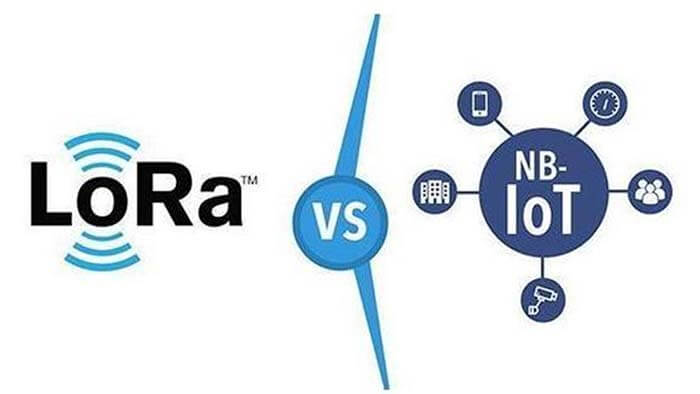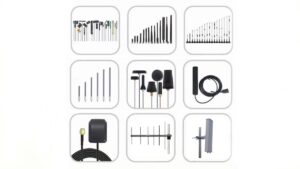Lora and NB-IoT are key technologies in the Internet of Things technology, Lora vs NB-IoT technology, what is their biggest difference? Lora vs NB-IoT technology, Where are the respective advantages?
To do a comparison analysis of Lora vs NB-IoT technology, we need to consider two important factors that require power consumption in the IoT terminals (peak current and average current) and protocol content.
The synchronous protocol of the cellular network requires that the terminal must be networked regularly and has a short downlink delay. LoraWan uses asynchronous Aloha protocols that require regular wake-up terminals, and the Lora terminal can be dormant or shorter depending on the specific application scenario demand.
The design of the cellular network is to improve the utilization of the spectrum, and the node cost and battery life can be sacrificed accordingly. LoraWAN nodes will have certain lacking in terms of spectral utilization in order to reduce cost and extend battery life.
The essential demand for terminal nodes is coverage of the network. A significant advantage for NarrowBand-IoT is to provide network deployment by upgrading existing network facilities. A prominent advantage of the Lora industry chain is that members of each link have mastered their own autonomy and can determine the network deployment.
Anyone can install and run and maintain a Lora network. To support roaming or mobility, Lora needs to sign different contracts with different network operators, and different operators have different QoS issues.
The vitality of Lora is open, but defects are also open, the debris of the network itself will inevitably lead to unable to operate, and security issues, and Lora also needs to integrate additional security solutions to implement the Internet of Things. Security, at this point based on the technological advantages of the operator network, that is, no additional integration is excellent.
It is difficult to see which technology has absolute advantages in technology, and the largest difference between the two is to work in the authorized spectrum.
Due to problems such as interference, products based on the unauthorized spectrum will have problems only for a few days, and the authorization and non-authorization spectrum have also become the key to the future development of Lora vs NB-IoT technology.
Lora vs NB-IoT technology, both of them will be large in the operation stage and enterprise-level LPWAN. Between the two is a benign competitive partnership, the authorized spectrum represented by NB-IoT and the unauthorized spectrum represented by Lora will start from their respective advantages to carry out commercial use in complementarity.
The Internet of Things is a general trend, Lora vs NB-IoT technology is the most popular low-power WAN technology in China. As the most typical representative, they are widely used in various fields.
What is the Lora vs NB-IoT difference?
First, a different frequency bands in Lora vs NB-IoT
Lora works in a 1GHz or less unsubstantive band, so its application does not require additional charges. NB-IoT and cellular communication are authorized to use the band below 1GHz, so it is necessary to charge.
The frequency band between 500MHz to 1GHz is the best choice for long-distance communications because the actual size and efficiency of the antenna are quite favorable.
The second, the different battery lives in Lora vs NB-IoT
The Lora module has unique features in handling interference, network overlap, and scalability, but it does not provide the same quality of service as the cellular protocol.
NB-IoT cannot provide the same battery life as Lora because of the quality of service. If you need to guarantee the application scenario, recommend NB-IoT if you prefer low cost, and a lot of connections, Lora is a good choice.
With regard to battery life, there are two important factors that need to be considered, namely, the current consumption and protocol content of the node. Lora is a protocol based on asynchronous Aloha, which means that the node can do long sleep or short sleep according to the needs of the specific application scenario; the node of the synchronous protocol such as the honeycomb must be networked, which will consume additional battery power.
Therefore, for applications that require frequent communication, short latency, or large amounts of data, NB-IoT may be a better choice, while Lora is more suitable for a lower cost, longer battery life, and nonpermissive scenes.
Third, different equipment costs in Lora vs NB-IoT
Lora vs NB-IoT protocol, the Lora protocol is simpler and easier to develop, which is more applicable to the microprocessor for microprocessors. At the same time, there are already low-cost, relatively mature Lora modules, and the upgraded version will also come out.
The Lora wireless transmission and receiving module market is reasonable, about $ 7-10. Lora can be implemented by using a traditional signal tower, an industrial base station, or even a portable home gateway. The base station and home gateway are cheaper. However, for NB-IoT, the price conservative estimate of the upgrade existing 4G LTE base station is not less than $ 15,000 per unit.
Fourth, different network coverage and deployment progress in Lora vs NB-IoT
The NB-IoT standard was announced in 2016. Except for the network deployment, NB-IoT also explores the commercialization of the industrial chain and the establishment of a long time and energy. The entire industrial chain of Lora is mature, and the product is in the state of being ready.
At the same time, many countries in the world are carrying out or have completed national network deployments when the NB-IoT industry chain is limited by the frequency band and operators.
LORA vs NB-IoT technology, both have their own unique advantages and should be optimally selected in different projects. In the fast-growing Internet of Things companies, NB-IoT and Lora will have their own broad application market. In the future, this low-power WAN technology will change our lives.
Besides the Lora vs NB-IoT Technology article, you may also be interested in the below articles.
PCB Antenna VS. External Antenna
Ceramic Antenna VS. PCB Antenna, A Comparison Guide
Wifi vs. 5G, is 5G better than Wifi?
Mobile Networks’ Evolution From 1G To 5G




